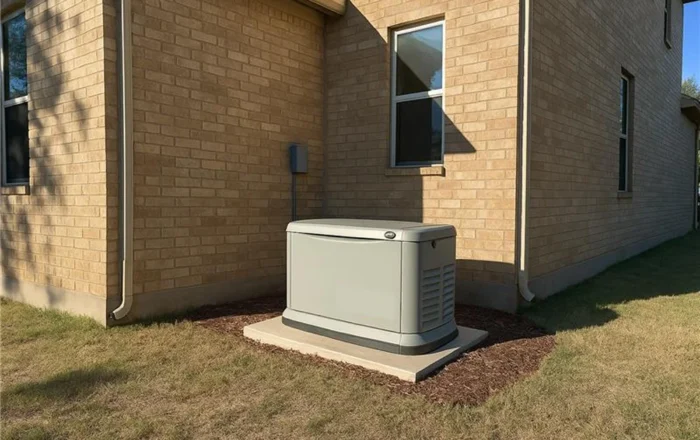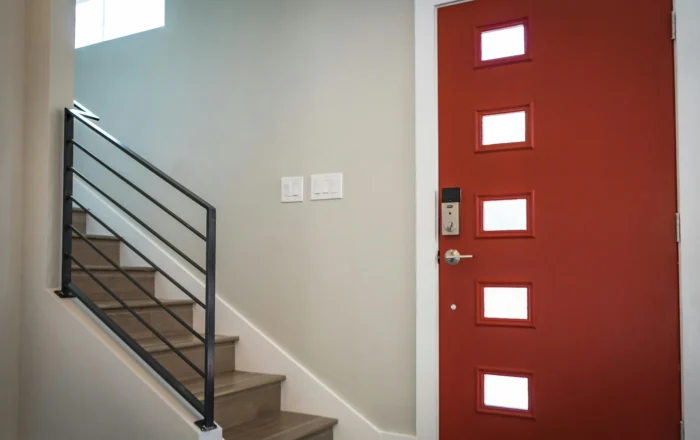How to Choose a Generator for Your Home
6 minute readHow to choose the right generator for your Texas home
Home > Blog > What is AFUE? Efficiency Ratings Explained
2 minute read • Last update July 2024

AFUE stands for annual fuel utilization efficiency and measures the efficiency of how a furnace, boiler, or water heater converts fuel into heat.
AFUE is measured on a scale of 0-100%. The higher the percentage, the higher the efficiency of the heating system.
The formula to calculate AFUE is the total heat output of the system divided by the total energy input during a specific time period.
AFUE = Total Heat Output / Total Energy Input
AFUE is measured on a scale up to 100%, but it’s not possible to have a system achieve a score of 100%. The highest possible AFUE rating varies depending on the fuel used to generate heat in the type of furnace.
| Fuel | Maximum AFUE Rating |
|---|---|
| Oil | 95% |
| Gas | 98-99% |
| Electric | 99%+ |
Depending on where you live, the AFUE rating required to ensure efficient and comfortable heating varies. Regions with colder weather will want higher efficiency systems than regions with warmer weather.
Generally, a standard AFUE rating lands between 80-85%. These systems are less expensive to install, but can lead to higher fuel costs (like higher gas or electric bills) over time.
Furnaces, boilers, or water heaters with ratings between 86-90% AFUE would be considered high efficiency. Systems with these ratings find a good balance between upfront installation cost and long-term operational costs.
Heating systems with AFUE greater than 91% AFUE are ultra-high efficiency. These are the most energy efficient and environmentally friendly. Ultra-high efficiency heaters are the most expense to install but have the lowest fuel costs for operation over time.
| Efficiency | AFUE Rating |
|---|---|
| Standard Efficiency | 80-85% |
| High Efficiency | 86-90% |
| Ultra-High Efficiency | 91%+ |
Texas is a huge state with widely varying climates, as a result the level of furnace efficiency you should aim for in your home will depend on where you live.
In you live in central or south Texas in cities such as Austin, Houston, Corpus Christi, or McAllen, it would not be recommended to purchase and install an ultra-high efficiency heating system. Because winters here are milder, you can get by with a furnace, boiler, or water heater with a standard AFUE rating.
If you live on the north end of the state, especially in areas of west Texas such as Lubbock or Amarillo, where winters can be more frigid you may want to consider investing in a high efficiency system with a rating between 86-90%.
Homeowners interested in lowering their winter electric bills can look to upgrading their furnace efficiency, but they can also look at changing their electricity provider.
By switching to BKV Energy, you can secure an affordable fixed rate plan that may save you up to $800 per year or more. Enter your zip code to get started.
Graham Lumley, Digital Marketing Manager at BKV Energy, leads digital and traditional marketing strategies, focusing on educating Texans about the state's deregulated energy market. With over 8 years of marketing experience, he creates content to help consumers understand and save on their energy bills, bringing a fresh and dynamic approach to the industry.

How to choose the right generator for your Texas home

Energy Saving Tips Home Improvement
Choosing the right energy-efficient door can help Texas homeowners reduce cooling costs and improve home comfort year-round.
Get $50 off your electric bill!
Use code BKVEJOINUS50
Enter your zip code to shop BKV Energy's affordable, fixed-rate Texas electricity plans. Use the promo code for $50 off your electric bill.